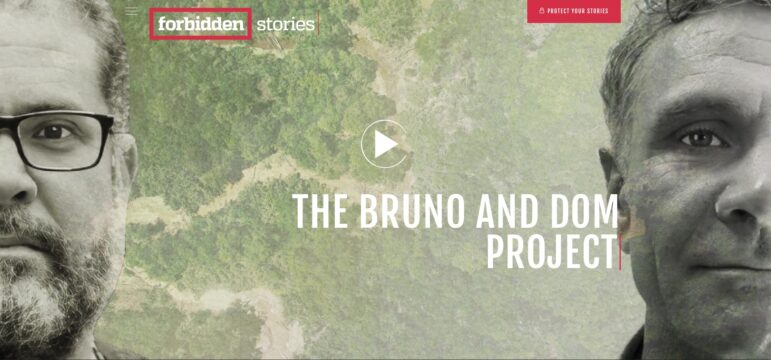

What If We Disclose Everything?

Public-private partnerships (PPPs) enable governments to build public infrastructure with private resources and expertise. Credit: World Bank
One day in 2012, when I was the head of a public-private partnership unit (PPP) in a sub-national government in Brazil, I woke up at 7:00 am to my phone ringing.
I was surprised to see that it was the State Governor calling me – not his assistant but him, personally. He was not happy and had a very direct question: Why are today’s newspapers saying that one of our most successful PPP projects is failing to meet quality standards?
The day before I received the Governor’s phone call, I had ordered disclosure of full performance reports for all PPP projects on our website. This was the first time that any government had done that in Brazil. The particular project that the Governor had mentioned was a toll road that scored 83 percent in the previous trimester. This was a fantastic score from a technical perspective. Besides, the performance indicators that we used were created to maintain incentives for improvement over the life of the contract. It was never meant for the private party to score 100 percent. Unfortunately, the news reporter did not understand this and didn’t invest time to ask – so I received the governor’s call. At that moment I knew I had a very strong case to make.
From my experience of more than eight years managing transactions and capacity building programs in Latin America and Africa, a radical approach to transparency is the key to enable PPPs to deliver more and better infrastructure services. In other words, I am fully convinced that opacity is the shortest route PPP projects can take towards addressing expensive failures.
The crude truth is that opaque PPP policies serve a lot of interests, but almost none of them benefit service users or taxpayers. Here are some of the key points on transparency in PPPs, from my perspective:
First, much of the developing world faces complex governance challenges. Fairness issues haunt the day-to-day life of procurement processes. PPPs are very big projects, subject to sophisticated risk allocation mechanisms, and governments do not always have the capacity to fully understand the consequences of the contracts, which only increases the level of illegitimate interests surrounding projects. Therefore, in my opinion, unfortunately opacity is the best way to protect those interests.
 Second, opacity feeds inefficiency, even when no explicit governance issues are present. The long-term nature of PPP contracts make managers want to protect themselves. After all, valid information can be a very powerful tool for users to push for contractually determined service levels to be effectively delivered, and for the government to use its regulatory tools to monitor costs and quality. I understand why contract regulators and private sector infrastructure operators prefer that service users do not have adequate information: they feel less pressure.
Second, opacity feeds inefficiency, even when no explicit governance issues are present. The long-term nature of PPP contracts make managers want to protect themselves. After all, valid information can be a very powerful tool for users to push for contractually determined service levels to be effectively delivered, and for the government to use its regulatory tools to monitor costs and quality. I understand why contract regulators and private sector infrastructure operators prefer that service users do not have adequate information: they feel less pressure.
Third, opacity stimulates opportunistic behaviors, both of government and of the private sector. I have noticed around the world that parties often enter into agreements knowing all too well they will break it (or try to change it) as soon as they can. Opacity helps keep watchdogs at a safe distance, and creates an adequate environment for discretionary changes to a contract that might push it away from its original objectives. So the more opaque the practices, the more difficult it is to enforce a contract in the long run.
From my perspective, a full, radical, proactive transparency policy is the single best and least-expensive strategy to reduce the influence of those interests in the PPP project cycle. The transparency policy (see examples from PPPIRC) should include, at least, the unrestricted disclosure of:
- Unredacted contracts
- Associated financial deals
- Unredacted bids
- Unredacted amendments
- Performance reports
- Financial data of the project company
- Fiscal commitments and risks
I have been challenged that there are legitimate commercial secrecy concerns that indicate the need to keep information away from the public’s eye. My view on this is that the same lack of transparency required to keep commercial secrecy also serves to hide fairness issues during procurement, protects inefficient organizations from scrutiny and creates difficulties for contract enforcement.
In my opinion, when companies are involved in PPP deals, the contractual or regulatory exclusion of any commercial secrecy right seems to me a very small price to pay in order to bring users’ and taxpayers’ concerns into the core of the PPP project cycle. In other words, if the private sector were to price all costs associated with disclosing the commercial secrets related to PPPs, and include them in the costs of the project, there would still be value for money compared to the opaque (and costly) alternative.
Now back to that early-morning phone call in Brazil. The Governor eventually agreed that, despite possible pitfalls along the way, we should cultivate an unrestricted transparency policy. He very wisely considered that it could reduce overall costs to the government, improve service quality to users and create a stable environment for private investments. So, thankfully, I did not lose my job that morning. However, I did learn that, to effectively disclosure complex information, one must consider the different needs of different audiences.
But that is a subject for another post.
This story originally appeared in a World Bank blog. It is reprinted with permission.
 Marcus Siqueira is an expert in public-private partnerships in Brazil, with a multidisciplinary background and more than 10 years of experience screening, preparing, and managing PPP transactions.
Marcus Siqueira is an expert in public-private partnerships in Brazil, with a multidisciplinary background and more than 10 years of experience screening, preparing, and managing PPP transactions.









